How Do I Use a 2GIG XCVR3-GC3 and Image Sensors with a GC3e?
The 2GIG XCVR3-GC3 Transceiver Module is required to add support for up to ten (10) image sensors to the 2GIG GC3e Panels. Unlike the 2GIG XCVR2-345, it is a single frequency device, operating at 900 MHz. Adding the 2GIG XCVR3-GC3 does not remove any other compatibility from the panel.
 One of the more appealing features of the 2GIG Panels is their support for image sensors. The addition of these sensors allows a user with an Alarm.com account to receive images obtained during an alarm event. In addition, a user can request a "peek-in" to check and see what's going on at their home or business. The user can also set up other image captures, such as a capture when the system is disarmed, or a background capture. In some cases, the images obtained during an alarm can be sent to the monitoring station for alarm verification. In areas that require alarm verification, this can serve as a very effective tool. Image sensors offer an appealing, and less expensive, alternative to full video monitoring.
One of the more appealing features of the 2GIG Panels is their support for image sensors. The addition of these sensors allows a user with an Alarm.com account to receive images obtained during an alarm event. In addition, a user can request a "peek-in" to check and see what's going on at their home or business. The user can also set up other image captures, such as a capture when the system is disarmed, or a background capture. In some cases, the images obtained during an alarm can be sent to the monitoring station for alarm verification. In areas that require alarm verification, this can serve as a very effective tool. Image sensors offer an appealing, and less expensive, alternative to full video monitoring.
With the 2GIG GC2, in order to add the 2GIG XCVR2-345 transceiver, you must power down the panel, remove the existing 345MHz receiver, and replace it with the XCVR2-345. In this case, once you make the swap the panel is then capable of supporting both 345MHz security and life-safety sensors, as well as the 900 MHz Image Sensors.
However, the release of the 2GIG GC2e gave rise to a problem. On the encryption-capable GC2e Panel, you must choose between using image sensors, or using encrypted sensors from the 2GIG eSeries. If you remove the 345 MHz built-in receiver to install the XCVR2-345, you are removing the receiver that is capable of supporting encrypted sensors. This is simply a hardware limitation of the 2GIG GC2e. There are not enough panel inputs for separate 345 MHz and 900 MHz devices, and a transceiver with the ability to support both two-way 900 MHz communication, as well as encrypted and non-encrypted 345 MHz frequencies, has not been created yet.
The 2GIG GC3e Panel operates differently. On the GC3e, the 2GIG XCVR3-GC3 is a single protocol 900 MHz transceiver, and it connects to the panel through the terminal block, rather than as a daughterboard. This means that all of the components that are factory-installed inside the panel will remain in place. The XCVR3-GC3 will connect to power and data via the terminal block as shown below. As a result, you won't lose the panel's ability to support encrypted 345 MHz sensors, and you can add both encrypted sensors and image sensors.
To install the 2GIG XCVR3-GC3, you should power down the panel completely. Do this by first either unplugging the transformer from the outlet, or removing the barrel connector at the panel to drop AC power. Then disconnect the battery from the main board. Once the panel has powered completely down, make the connections shown below.
- Red: -> Smoke +*
- Black: -> GND
- Green: -> RX
- White: -> TX

*The Smoke + and Smoke - terminals are not marked on the 2GIG GC3e panel, as shown in the diagram above.
Once the connections have been made, restore power by first reconnecting the battery to the proper connector on the panel's main board. Then reconnect the transformer second. Do this either by plugging the transformer back into the outlet, or by plugging the transformer's barrel connector back into the jack on the panel. Once the panel powers back up, you can enroll image sensors with the panel. The 2GIG GC3e can support up to ten (10) image sensors. The 2GIG IMAGE2 and the 2GIG IMAGE3 are both supported with the XCVR3-GC3. Although Alarm Grid no longer sells the IMAGE2 version, if you already have one, or if you plan to purchase one elsewhere, it should still work.
To use image sensors on the 2GIG GC3e, you must have an Alarm.com account, and the monitoring plan you sign up for must support image sensor uploads. All Alarm Grid monitoring plans that support a connection for Alarm.com with interactive service, those being our Gold and Platinum (Self or Full) Plans, allow for the use of image sensors. For full details on image sensor clip limits, please take a look at this comprehensive FAQ.
Did you find this answer useful?
We offer alarm monitoring as low as $10 / month
Click Here to Learn MoreRelated Products
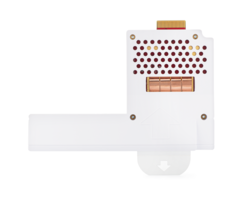
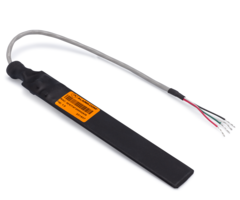
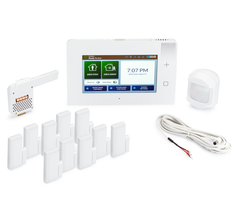

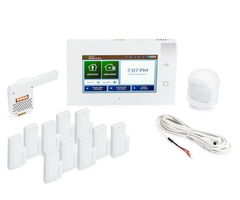


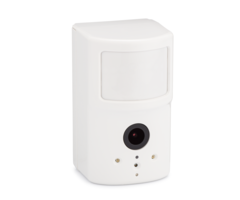
Related Categories
- Answered
- Answered By
- Julia Ross
